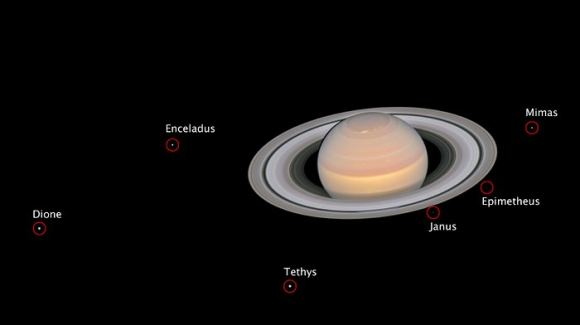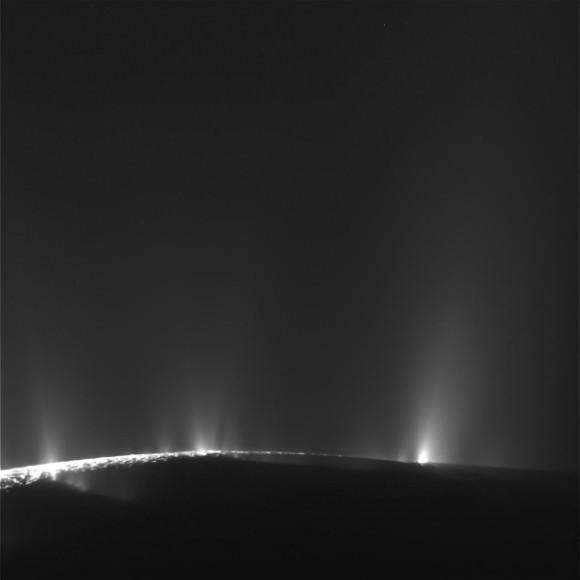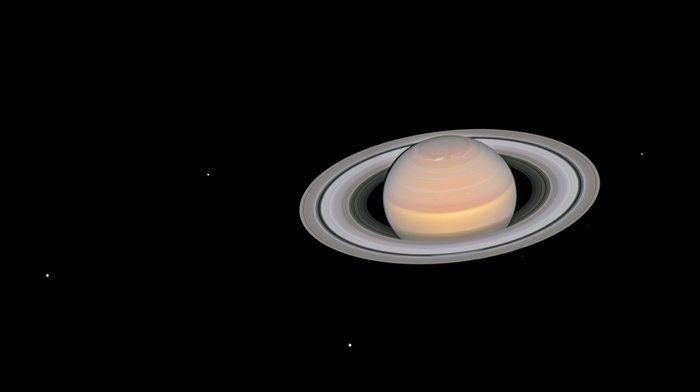We can’t seem to get enough of Saturn. It’s the most visually distinct object in our Solar System (other than the Sun, of course, but it’s kind of hard to gaze at). The Cassini mission to Saturn wrapped up about a year ago, and since then we’re relying on the venerable Hubble telescope to satisfy our appetite for images of the ringed planet.
This image was captured a short time before opposition on June 27th. At that time, the Sun, Earth, and Saturn were all in alignment and the Sun lit Saturn up like a spotlight on a stage. Saturn was also at its closest point to Earth at the time, making the image that much more detailed and striking.
From left to right, the moons in the image are Dione, Enceladus, Tethys, Janus, Epimetheus and Mimas. An annotated version of the image reveals the tiny moons Janus and Epimetheus.

The largest moon in the image is Dione, with a diameter of 1123 km.(698 mi), and the smallest is Epimetheus, the oddly-shaped moon with a diameter of 116 km. (72 mi.) Neither of those two are the most interesting of Saturn’s moons, though. That distinction goes to Enceladus, the ice moon.
Enceladus is of great interest because of the icy plumes shooting up through fissures in the moons icy surface. Cassini spotted them in 2005, near the moon’s south polar region. There are over 100 of these geysers on Enceladus. In 2014, follow-up observations by Cassini found evidence of a sub-surface ocean about 10km. (6.2mi.) thick at the south pole. Then, in 2018, Cassini detected complex macromolecular organics in the plumes. Since all known life here on Earth is based on these organic compounds, astrobiologists speculate that this warm sub-surface ocean might host life.

The hexagon-shaped storm at Saturn’s north pole is also visible in the image. It’s a persistent feature on Saturn that Voyager 1 first spotted on Saturn during its flyby in 1981. Saturn was already an intriguing planet, but the hexagonal storm at the north pole adds to the intrigue.
These Hubble images are part of the Outer Planet Atmospheres Legacy (OPAL) project. OPAL focuses Hubble’s power on the outer planets, and the goal is to gather long-time baseline observations of them, in order to study their dynamic and evolving atmospheres.
Sources:

